-
Posts
22,214 -
Joined
-
Last visited
-
Days Won
67
Content Type
Profiles
Forums
Blogs
Gallery
Events
Store
Posts posted by JapanX
-
-
Fifth class.
 0
0 -
Fourth class.
 0
0 -
Third class.
 0
0 -
Second class.
 0
0 -
First class.
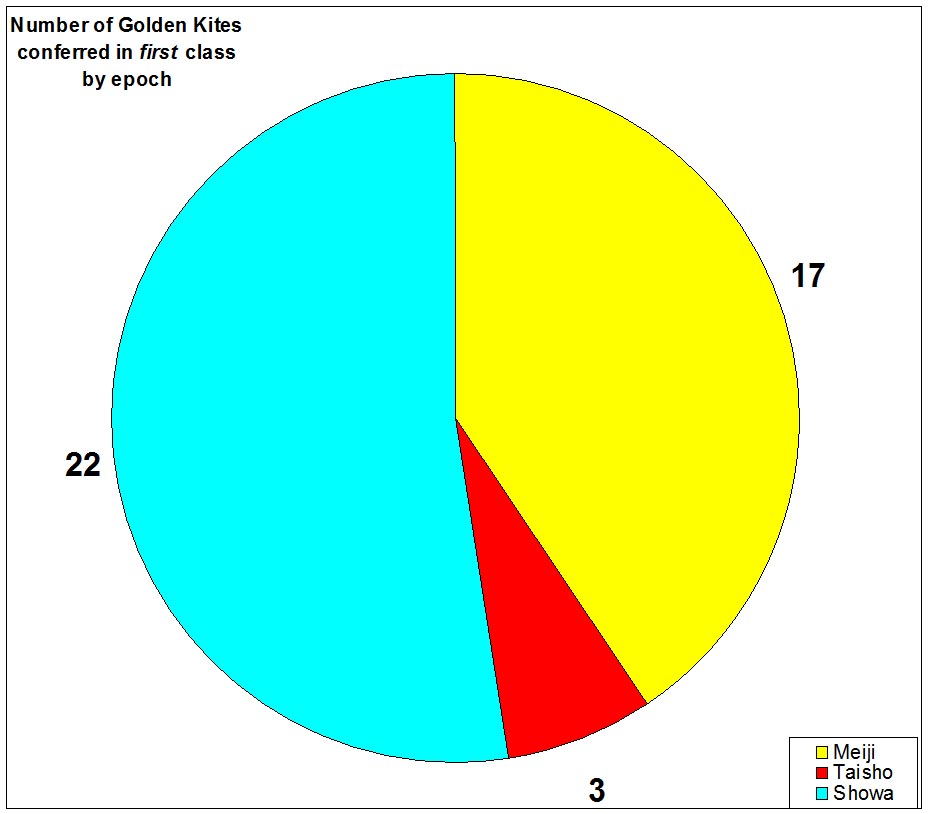 0
0 -
Now distributions for every class by epochs. But at the begining - the complete picture.
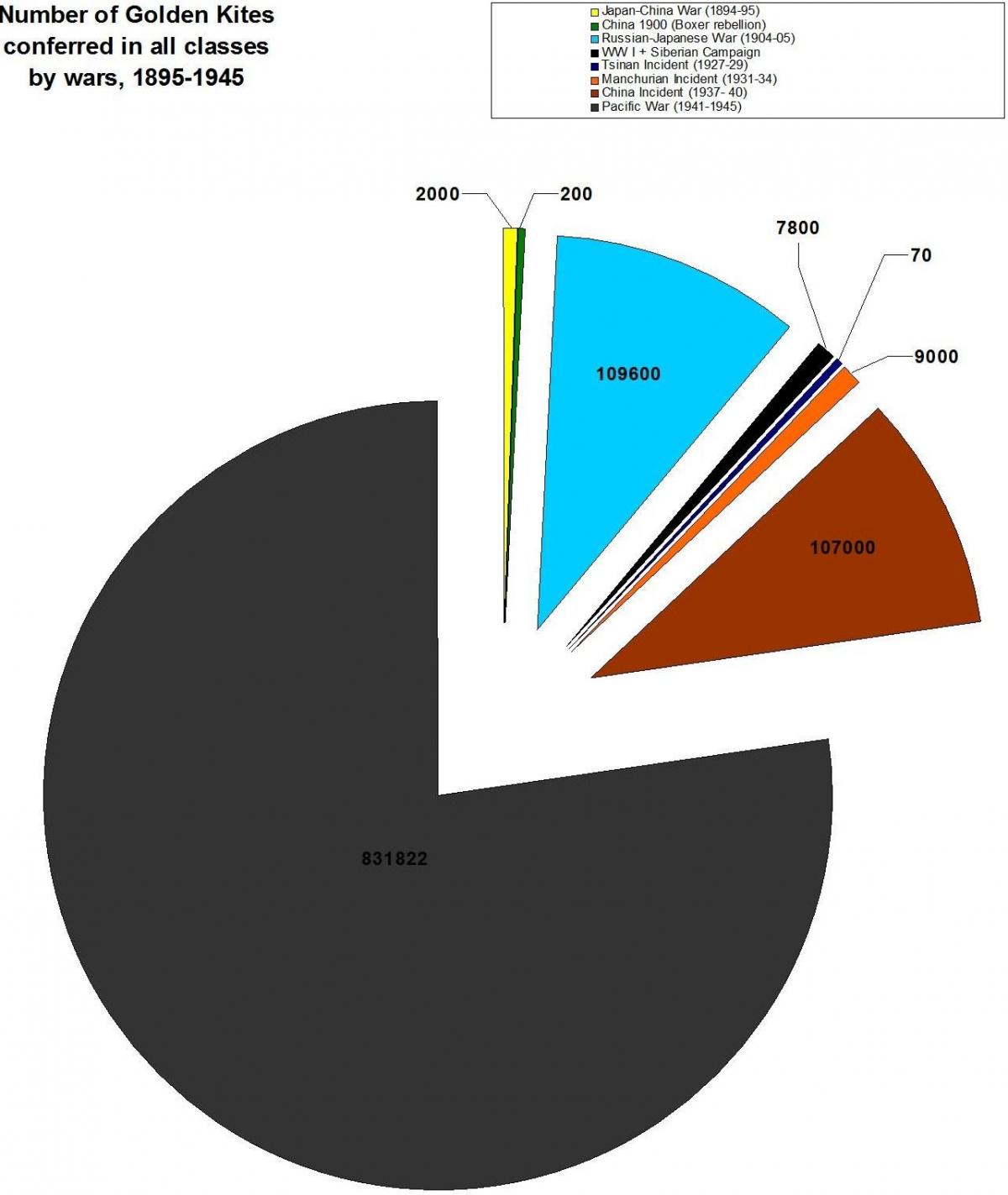 0
0 -
So this is our approximated distribution for the Showa epoch.
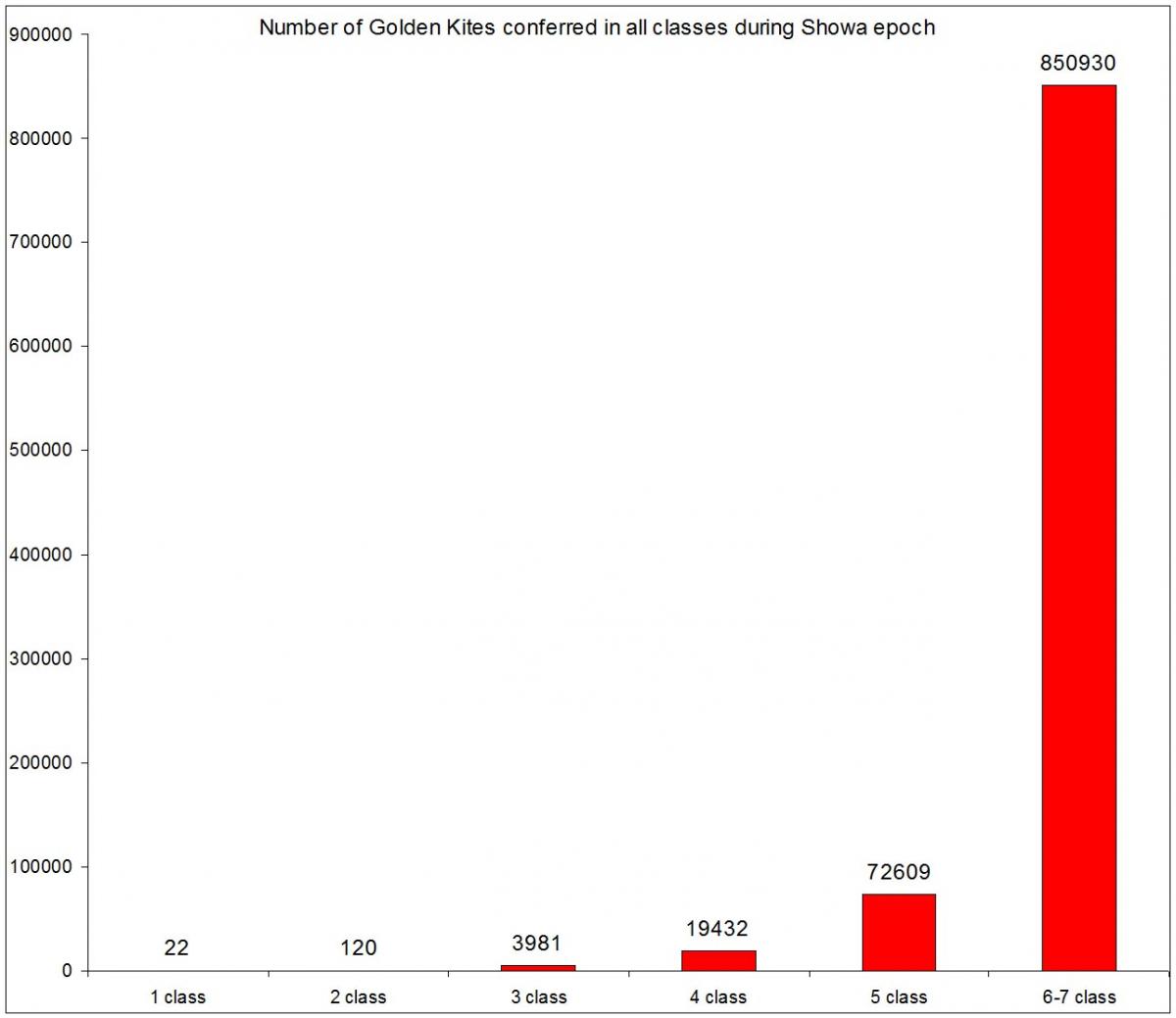 0
0 -
So how big is our measurement error? No more than 10% no less than 5% (just trust me mates
 ).
).Is this error acceptable? Yes.
0 -
Now let’s take % of kites in 3, 4, 5 and 6-7 classes for Meiji epoch and (using the total number of Showa kites (which is 947892 = 1 067 492 – (Meiji total + Taisho total)) we will have our data for Showa epoch. Here it is.
 0
0 -
And here is Showa numbers.
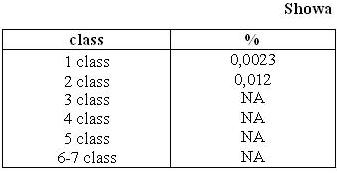 0
0 -
Take a good look at this two percentage distributions. Look how stable it is in the case of 3, 4, 5 and 6-7 classes. Of course Meiji epoch gives us much more representative distribution (because of the range) than Taisho epoch.
0 -
And here numbers for Taisho epoch.
 0
0 -
Here we have numbers for Meiji.
 0
0 -
But using distributions for Meiji and Taisho epochs we can easily get the missing numbers for 3rd, 4th, 5th and 6-7th classes. How? By simple extrapolation (I think Meiji distribution is quite representative!). For this let’s calculate percentage of kites in every class (against total number) in Meiji and Taisho epoch.
0 -
Showa
The most difficult case is Showa distribution. All we have is numbers for 1st and 2nd classes. Here they are.
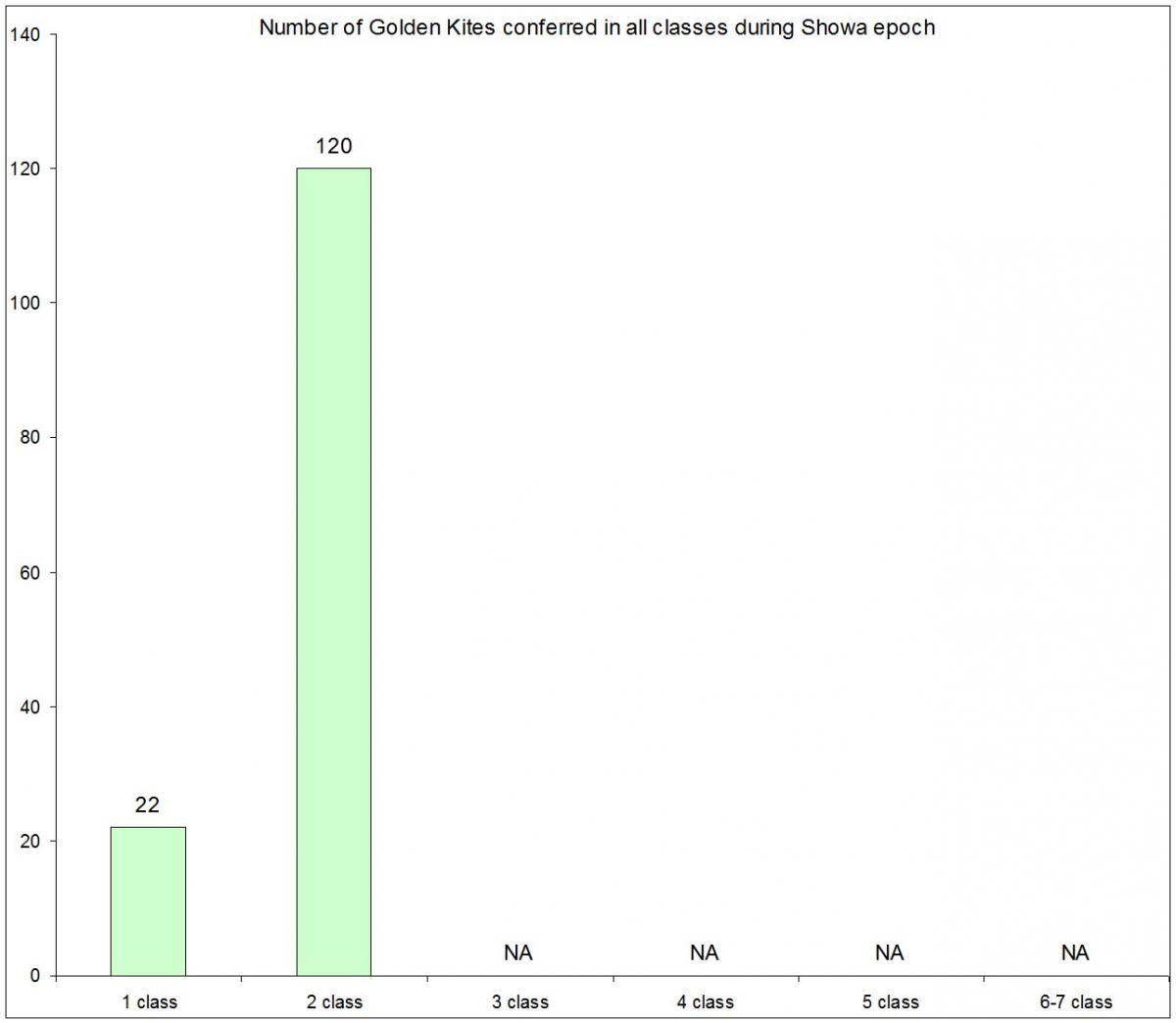 0
0 -
Taisho
And another distribution for Taisho epoch.
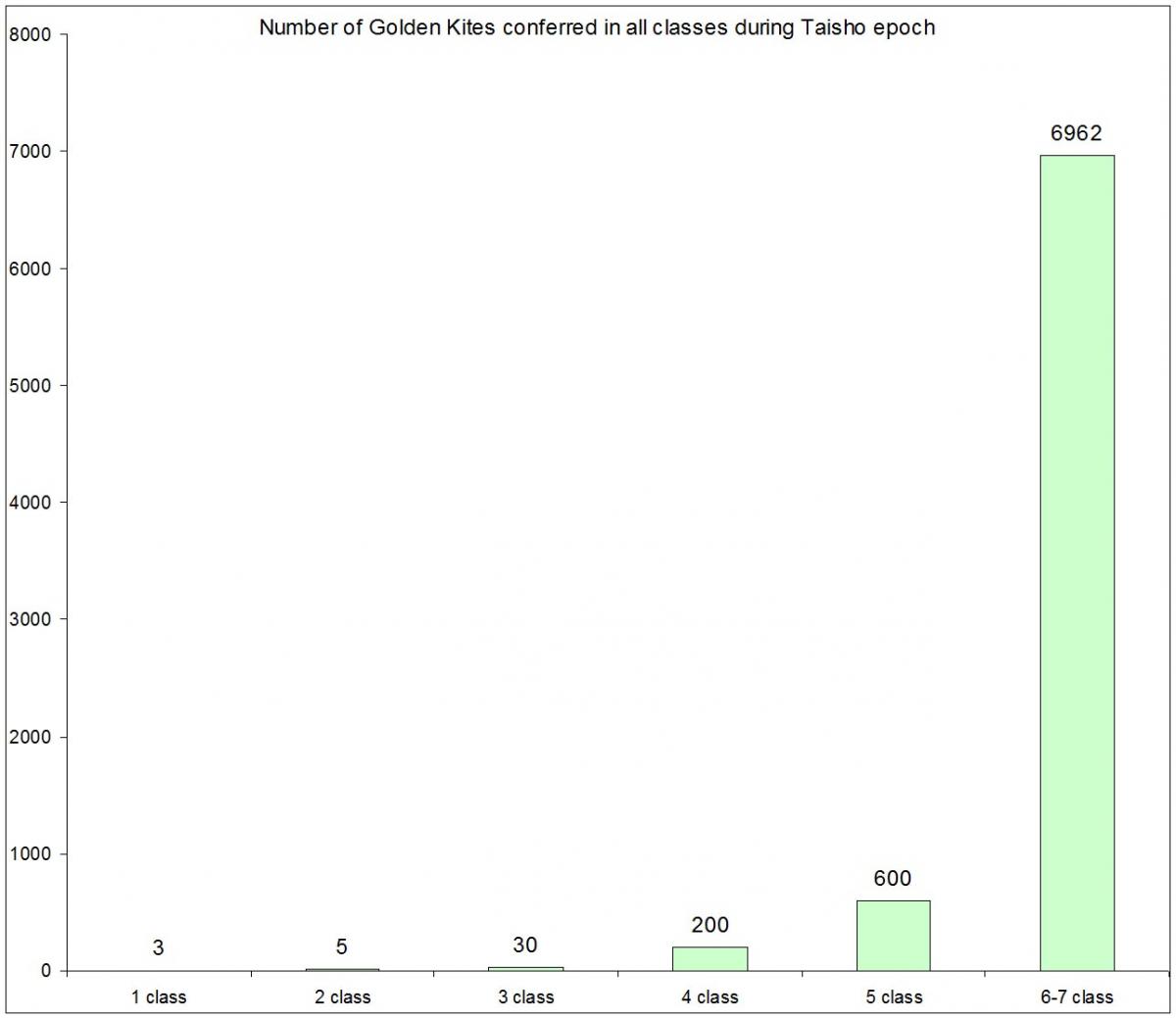 0
0 -
Meiji
Number of awards in every class (with the exception of 6th class) for Meiji epoch.
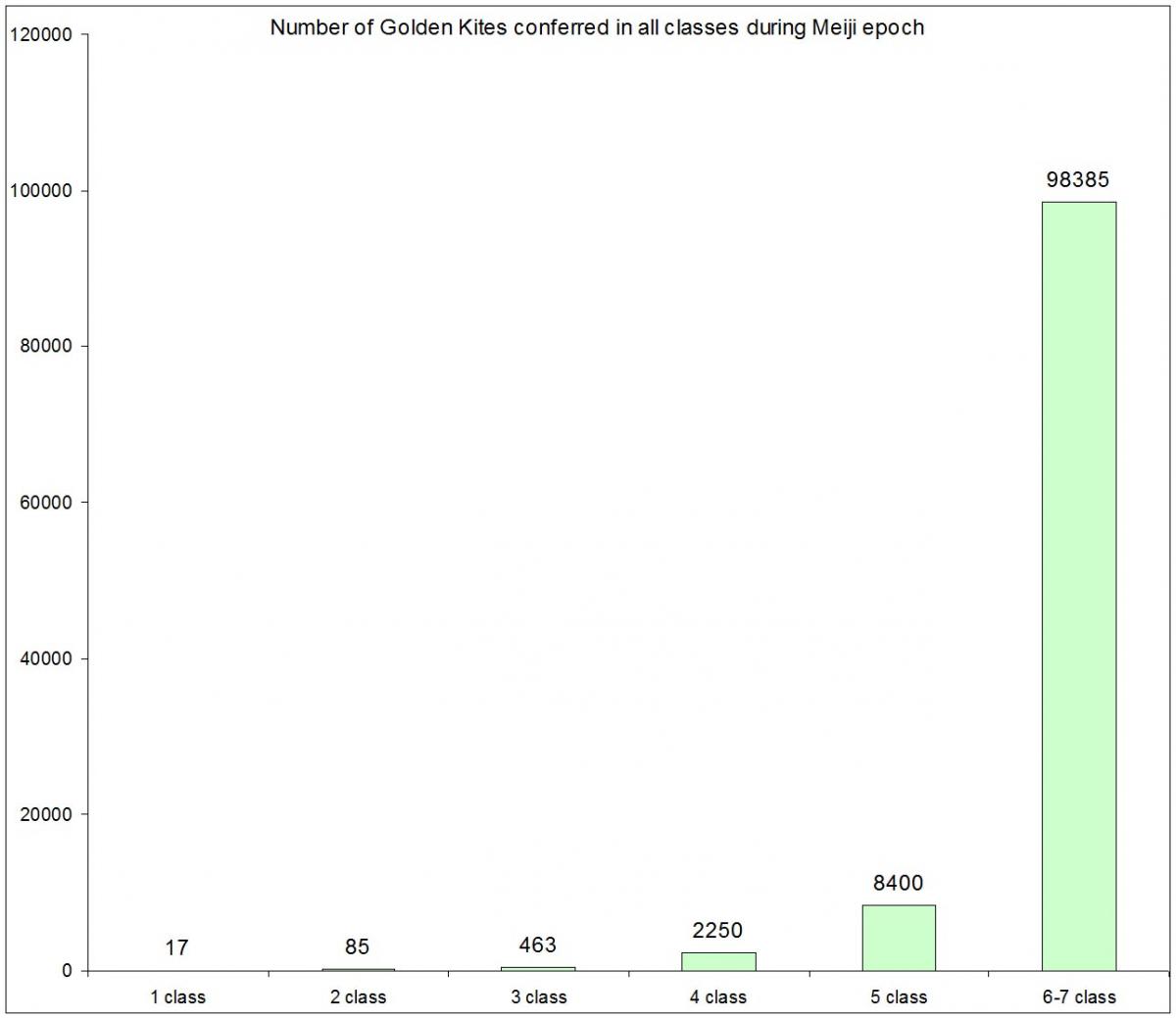 0
0 -
“… 1 067 492 awards in all grades were made…”
(Peterson, p. 19)
That’s a lot of Kites! But how this million distributed by classes and epochs? That`s an interesting question!
The only additional information we have from Peterson is that “… the great majority of these were in two lowest grades” + total number of 1st and 2nd class. That’s it. In our following discussion we will use three sources of statistical information
1) Peterson book
2) Mr. Nakabori research + Japanese friend of Pieter (again many thanks!)
3) book Kunse (“Orders”) by Togashi Dzundzi which was published in Osaka by Hoikusya in 1972 (in turn information contained in this book I get from russian book Розанов Н.О. (2001) Япония: история в наградах. Москва: РОССПЭН//Rozanov, N.O. (2001) Japan: History in Awards. Moscow: ROSSPEN).
Let’s start.
0 -
ALSO - I forgot about this - Variation C Sacred Treasures have maker codes on the suspension ball - these were later moved to the back of the paulownia suspension on D - so I believe we know C is more modern buy this as well.
Here some of the marks you can find on Variations C and D. It is obvious that this two variations are blood related. :)
 0
0 -
Gents, just wanted to say thanks for an absolutely fascinating topic.
I've been following the posts and this has to be one of the most educational topics in a long while!
Cheers to all

Hi doc! Thanks and hurray for Japanese Phaleristics!

Nick
P.S. May the force be with you :)
0 -
So the order itself doesn’t give us any useful information for its accurate attribution (the only thing for sure – it is after 1956 piece).
All we have is the box.
Is it early? Probably.

Is it late? Probably.

Is it legit? Probably.

Is it handmade by recipient/collector/dealer? Probably.

Is it made by the private workshop in some “edición limitada” fashion? Probably.

Of course this box may be (or may not be) “late-after-war-circa1956-not-handmade-but-serial-made-piece”.
I can live with that. :)
0 -
Exactly because of economical upturn in the first half of 50s (I think this is one of the factors) Japan decided to restore its awarding system. Here is restoration chronology.
18 September 1953 Merit Medals were restored.
22 January 1955 two new Merit Medals (yellow and purple ribbon) were introduced.
1 April 1956 golden RC order and golden RC medal were introduced.
12 June 1963 Sacred Treasure and Rising Sun orders were restored.
0 -
No, 1956 wasn't 1946, but it wasn't peaches and cream either!

So what is exactly this “not peach and creamy” time?
In concordance with my information Japan in 1957 held
1st place in the shipbuilding (I heard that this is quite metal consuming industry, though 99% of all iron ore and nonferrous metals were imported)
1st place in fishing
1st place in production of ceramics
1st place in production of raw yarn
2nd or 3rd place in rice production
2nd or 3rd place in production of ceramics
2nd or 3rd place in production of photo equipment and radios
2nd place in production of engineering tools
et cetera, et cetera, et cetera…
Held place where?
In the world!
Not bad! Not bad at all!
So where we were?
Attachment economies?
For real?

...they do not seem to have cut corners on those!
Of course they don`t! They could afford it back in 1956!
0 -
I am inclined to think that marks referred to different places of manufacture.
To be more exact - different workshops.
Why?
Same style of production = same mark
Usually this equality holds pretty perform well enough.
Something strage is going on only with marks on red cross medals. Very strange. Way too many marks and they don`t correlate with the time period (you can meet wwII medals with marked tabs! they even manufactured from different alloys).
It looked like old tabs (from Meiji-Taisho) were used for new medals (war Showa). Very strange. At least it looks strange ..
0



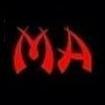
Statistical description of Golden Kites
in Japan
Posted · Edited by JapanX
Hey mate! What’s up with the 6th and 7th classes? The only thing I can say for sure is that we can rely on the following inequality.
Number of 6th class Kites in given epoch ≤ Number of 5th class Kites in given epoch
For some epochs maybe even < or even <<. NCOs …